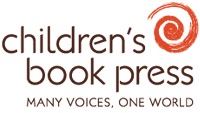by Julia López-Robertson, Michelle Metts and Tracy Spires, University of South Carolina
 Immigrant students face significant challenges in balancing their home culture and American culture. In Tangled Threads: A Hmong Girl’s Story (Shea, 2003), Heather and Lisa assimilated to the American culture and brought heartache and disappointment to their parents and grandmother. Many parents display tremendous bravery in bringing their families to America, only to lose their children to American culture (Buley-Meissner, 2002). ESOL (English to Speakers of Other Languages) teachers can assist students in embracing their home culture. Continue reading
Immigrant students face significant challenges in balancing their home culture and American culture. In Tangled Threads: A Hmong Girl’s Story (Shea, 2003), Heather and Lisa assimilated to the American culture and brought heartache and disappointment to their parents and grandmother. Many parents display tremendous bravery in bringing their families to America, only to lose their children to American culture (Buley-Meissner, 2002). ESOL (English to Speakers of Other Languages) teachers can assist students in embracing their home culture. Continue reading


 Emergent bilinguals make up 8.2% of the total population of all children under the age of 18 in South Carolina. While there are many languages spoken by immigrant children in our schools, Spanish is the most widespread language spoken by 40,000 of all emergent bilinguals (
Emergent bilinguals make up 8.2% of the total population of all children under the age of 18 in South Carolina. While there are many languages spoken by immigrant children in our schools, Spanish is the most widespread language spoken by 40,000 of all emergent bilinguals (



 One of the lessons that I have learned as a reader of global literature is to never read a book by itself–to always read a book alongside other books. Over and over, I find that our interpretations and connections change dramatically when we read paired books or read a book within a larger text set or collection. Throughout the next month, my blogs will focus on my experiences of reading books alongside each other, most recently within a graduate course on global literature.
One of the lessons that I have learned as a reader of global literature is to never read a book by itself–to always read a book alongside other books. Over and over, I find that our interpretations and connections change dramatically when we read paired books or read a book within a larger text set or collection. Throughout the next month, my blogs will focus on my experiences of reading books alongside each other, most recently within a graduate course on global literature.

